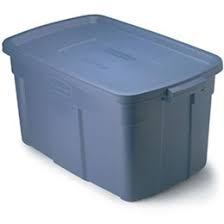As I have blogged about earlier, Space is going to be my first big unit of instruction in my science class. I promised you all some center based activities for space....and trust me they are coming.
However, we still have a few weeks before school starts and as I start to think about the beginning of the year, I know that I can't just head straight into instruction. Can you imagine starting the first day of school with a lesson on moon phases? No way....
So instead I want to walk you through the thinking processes in my mind as I start to plan for the year.
What will my students need for science education this year?
1. My students each need a
composition notebook...that will be transformed into a world class science notebook. I will make each student a label to put on the cover that says "Science Notebook". We will also write in a sharpie on the side the words: Science.
That makes it easier to find when it is inside the desk!
2. My students will also need
pencils, glue sticks (for the occasional xeroxed paper to be glued in) as well as
colored pencils for adding details.
3. I ask parents to send in some other supplies which are used in all curriculum areas but especially science:
snack bags, gallon sized bags and paper towels. These are essential for organizing and clean up.
What do I need to collect for science education this year?

1. TUBS....I have several large tubs from the FOSS units we use. However, if you don't have FOSS, you can still find large tubs. Rubbermaid and others have similar sized tubs that you can use to store large materials on a table that you designate for science.
I also have other smaller tubs (I like the kind that have no holes in the sides) for group materials. I usually have six groups of 4 students (24 kids). These small tubs are great for carrying materials back and forth. Types of tubs that work well - Rubbermaid tubs with tops or plain old plastic shoe boxes from the $1 store.

My teacher friends and I were just discussing our "tub issue"....because, there is more! I have small tubs for planting, sorting, holding center materials, shaking solutions, etc...
Yes, I think I do have a Tub Problem....

2. The second material I couldn't live with out....
TRAYS....
These blue trays can with a science kit that I use (Seeds of Science) but you can find these in various places as well. I have seen them as platters at Walmart or the Dollar Tree. You can use those for lots of things - including group work and center spots.

How do I store these materials?
I buy a large blue Tub (ha ha) that I keep
materials in when I am not using them. This is a great tub because it is solid (you can't see the
crap instructional materials inside. It also fits nicely under a student desk that can be covered with a table cloth.
More organization tips to come....





















